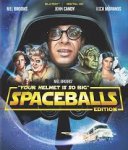michaelteever
Deceased
Personally, let me first to say, I truly hope nobody has had the experience of having a massive object devastate Uranus!!
But, I digress, I found this interesting.
Michael
For fair use education/research purposes.
The link:
The article:
A massive object devastated Uranus a long time ago and it never fully recovered
By Mike Wehner

Our Solar System is a pretty calm place these days, all things considered, but that wasn’t always the case. In the period when the planets were still forming, collisions between various large bodies were common, and they ultimately helped shape the system that we see today. New research shows that Uranus, a chilly, hostile planet with a number of peculiar features, was the victim of a devastating impact during those early years, and it might explain some of the planet’s strange personality.
Uranus moves much differently than the other planets in our Solar System, spinning on its side in comparison to the rest of the worlds in our neighborhood. Astronomers have often wondered just how this happened, but simulations performed by scientists at Durham University’s Institute for Computational Cosmology might have finally produced the answer.
“We ran more than 50 different impact scenarios using a high-powered super computer to see if we could recreate the conditions that shaped the planet’s evolution,” lead author Jacob Kegerreis explains. “Our findings confirm that the most likely outcome was that the young Uranus was involved in a cataclysmic collision with an object twice the mass of Earth, if not larger, knocking it on to its side and setting in process the events that helped create the planet we see today.”
Something absolutely huge slammed into Uranus when it was still young, causing it to tilt dramatically and spin on its side. The impact would have to have been a glancing blow, rather than a head-on collision, but the contact was sufficient to change the direction the planet’s axis is pointing.
The researchers also believe that the collision might have helped produce the planet’s rings of dust and debris, and maybe even its moons. The incredible damage to Uranus and the mass of loose material that was produced by the crash would have coalesced into a ball, and the planet’s skewed magnetic field that we see today might be a result of non-uniform settling of the material around its core.
But, I digress, I found this interesting.
Michael
For fair use education/research purposes.
The link:
The article:
A massive object devastated Uranus a long time ago and it never fully recovered
By Mike Wehner

Our Solar System is a pretty calm place these days, all things considered, but that wasn’t always the case. In the period when the planets were still forming, collisions between various large bodies were common, and they ultimately helped shape the system that we see today. New research shows that Uranus, a chilly, hostile planet with a number of peculiar features, was the victim of a devastating impact during those early years, and it might explain some of the planet’s strange personality.
Uranus moves much differently than the other planets in our Solar System, spinning on its side in comparison to the rest of the worlds in our neighborhood. Astronomers have often wondered just how this happened, but simulations performed by scientists at Durham University’s Institute for Computational Cosmology might have finally produced the answer.
“We ran more than 50 different impact scenarios using a high-powered super computer to see if we could recreate the conditions that shaped the planet’s evolution,” lead author Jacob Kegerreis explains. “Our findings confirm that the most likely outcome was that the young Uranus was involved in a cataclysmic collision with an object twice the mass of Earth, if not larger, knocking it on to its side and setting in process the events that helped create the planet we see today.”
Something absolutely huge slammed into Uranus when it was still young, causing it to tilt dramatically and spin on its side. The impact would have to have been a glancing blow, rather than a head-on collision, but the contact was sufficient to change the direction the planet’s axis is pointing.
The researchers also believe that the collision might have helped produce the planet’s rings of dust and debris, and maybe even its moons. The incredible damage to Uranus and the mass of loose material that was produced by the crash would have coalesced into a ball, and the planet’s skewed magnetic field that we see today might be a result of non-uniform settling of the material around its core.










